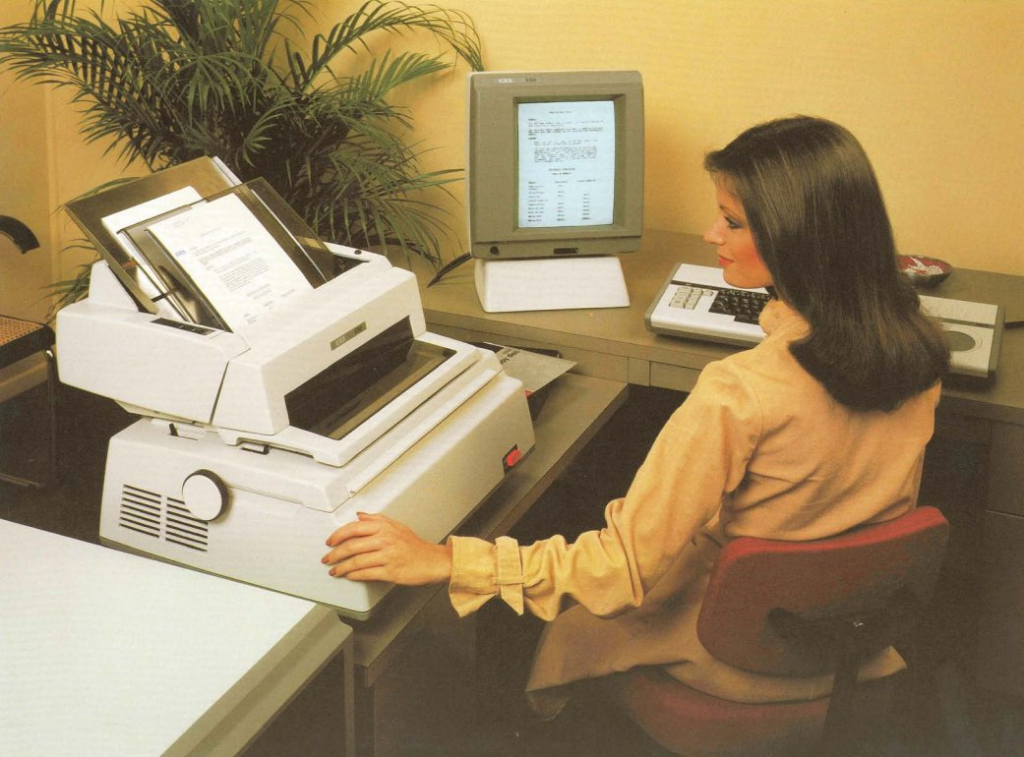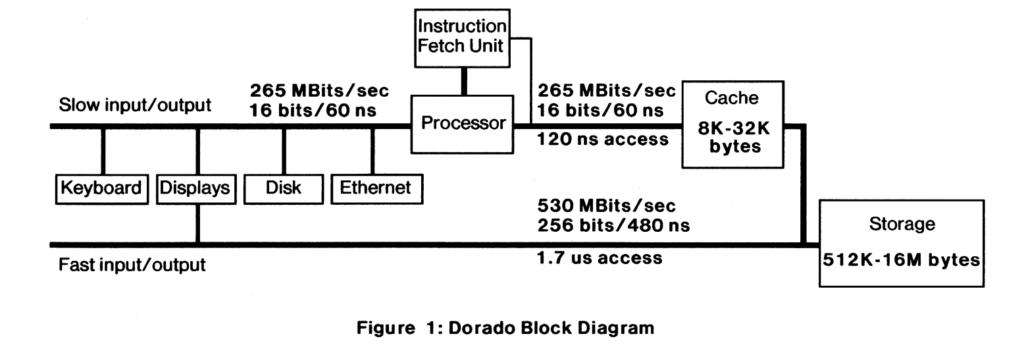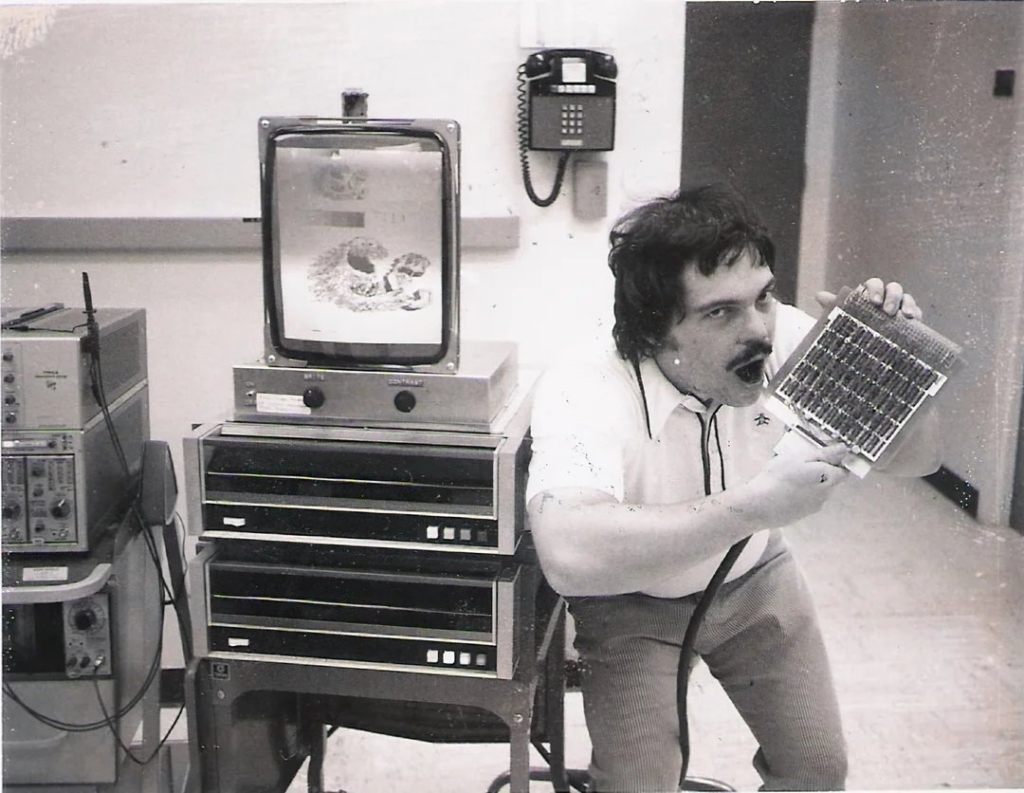In an attempt to move my writings to a place I can keep them, I’m posting my notes about DEALERS OF LIGHTNING: Xerox Parc and the Dawn of the Computer Age (1999) by Michael Hiltzik here.
There’s also a Twitter discussion. Enjoy it while it lasts* (written July 2 2023).
Alvy Ray Smith and Alan Kay
After running into issues bringing Alvy Ray Smith into PARC to as an “Artist In Residence”, “Temp” or “Contractor” to work on Superpaint, Alan Kay succeeded in bringing him over as “Furniture”.
Alvy Ray Smith was looked down upon by every senior at PARC outside Kay’s group, who didn’t get why color mattered (memory is expensive!). KCET TV featured Superpaint, Xerox heard and wasn’t having it. Smith, who was at PARC as “Furniture”, had his purchase order cancelled.
Side note: here’s an IEEE History of Computing Article about Superpaint.
The Alto
The Alto 1 was a prototype built in a handful of units to experiment. v2 was an experiment in productization: it was built in the SDS plant in LA, focusing on assembly. There was an Alto 3 as well, which was meant for mass production. It failed to clear bureaucracy. Many times.
In both cases, the Alto was better, further reaching, and deliverable faster than anything Xerox had been making anywhere else. Departments scaled quickly with unfitting org structures to deliver mass market products, and they all preferred their own stuff over Alto 3.
(Suffice to say I’ve seen this behavior happen multiple times since)
The first round of Alto 3 was canned for the Xerox 8xx “Word Processor” system, which had a proprietary OS just for word processing. This series later included the Xerox 820, which ran CP/M.

The second round of Alto 3, with a plan to manufacture entirely from commercial components, was canned in favor of the Xerox Star – a scope-crept project which included an OS and hardware, later only the OS with matching hardware.
PARC as the Progenitor of VLSI
Jim Clark learned about VLSI from Lynn Conway who was at PARC at the time, working on VLSI for enabling the Dorado (here’s a fascinating technical report Jim Clark wrote about it). Jim Clark built the “geometry engine” with VLSI principles, as the first vertex processor.
(Jim Clark later founded SGI, which at the time of the book’s writing, was a multibillion dollar company lol)


The first issue of INTRODUCTION TO VLSI SYSTEMS is still up on Conway’s UMich website. It’s an incredible book with fundamentals.
The Notetaker
Alan Kay tried to do the opposite of the Dorado and made a computer called Notetaker – a PC for schoolchildren (ok king). To put ethernet inside it, they studied Bob Metcalfe’s ethernet board and made it software-based, shrinking from 80 to 24 chips.

Alan Kay was so burned out from the project that he said he was “going to LA to take Organ lessons” and never came back. Unrelated: Among Kay’s contributions, he appears to also have invented the soyjak meme:

Apple
The demo Apple saw at PARC was a Xerox corporate decision that made no sense to anybody in the center. They came back 2 days later for more demo (likely at the behest of Jobs), then another time for the confidential stuff. Apple Lisa engineers read every PARC paper beforehand.
Side note: the book epilogue mentions “today [1999] even Apple’s existence is in doubt”. lol
The Xerox Business Model: Clicks
This is something I only vaguely knew but shocks me to my core even now: Xerox didn’t sell copy machines. It leased them and charged for photocopies. The counter clicked with each page, and salespeople would nickname their commission size “clicks”. HP ink biz model.
Doing Backflips to Avoid Selling Computers
The printers initially sold by Xerox were essentially teletype machines with a larger buffer. This is at a time where Xerox PARC had a working bitmap laser printer (more similar to Xerograhic copiers!), but Xerox wouldn’t put it to market due to internal politics.
The perception at the time among corporates was hardware needed to be part of a software product. This is a result of software being unpatentable (USPTO wouldn’t accept an application on software).
But We Totally Want to Sell Ethernet. Cables.
Xerox wanted to control all Ethernet products, a worse ROI than licensing photocopiers. IBM had token ring networks, patented and deployed by IBM. A really obvious thing to do was to give ethernet to the world and not worry about mfg, but “OEM” was a vague concept at the time.
How Research Departments Work Today
All in all: It took Xerox 12 years from buying a computer company (SDS, 1969) to selling a first personal computer (Star, 1981). Along the way, PARC developed almost every component of a minicomputer, without successfully productizing any. Star was a financial failure.
PARC drew prestige at first by having an ARPA association. ARPA drew prestige because of a charismatic leader who understood academics and sought their eccentricities.
At the time of the book’s writing (1999), Microsoft Research was the closest thing to PARC, what with connections to academia, and in spite of a lot of “practical” research, still a publishing cycle. Several companies have the same impetus today (2023), where I work included.
Sometime in Oculus Research’s expansion (now Facebook Reality Labs…Research? or Meta? idk) Michael Abrash told employees that the intention was to become PARC. I wonder which part though.
Notes
Update 06/07/2023: Someone pointed out that Alan Kay gave an AMA on HN in 2016 regarding it.